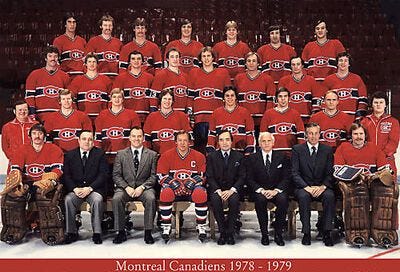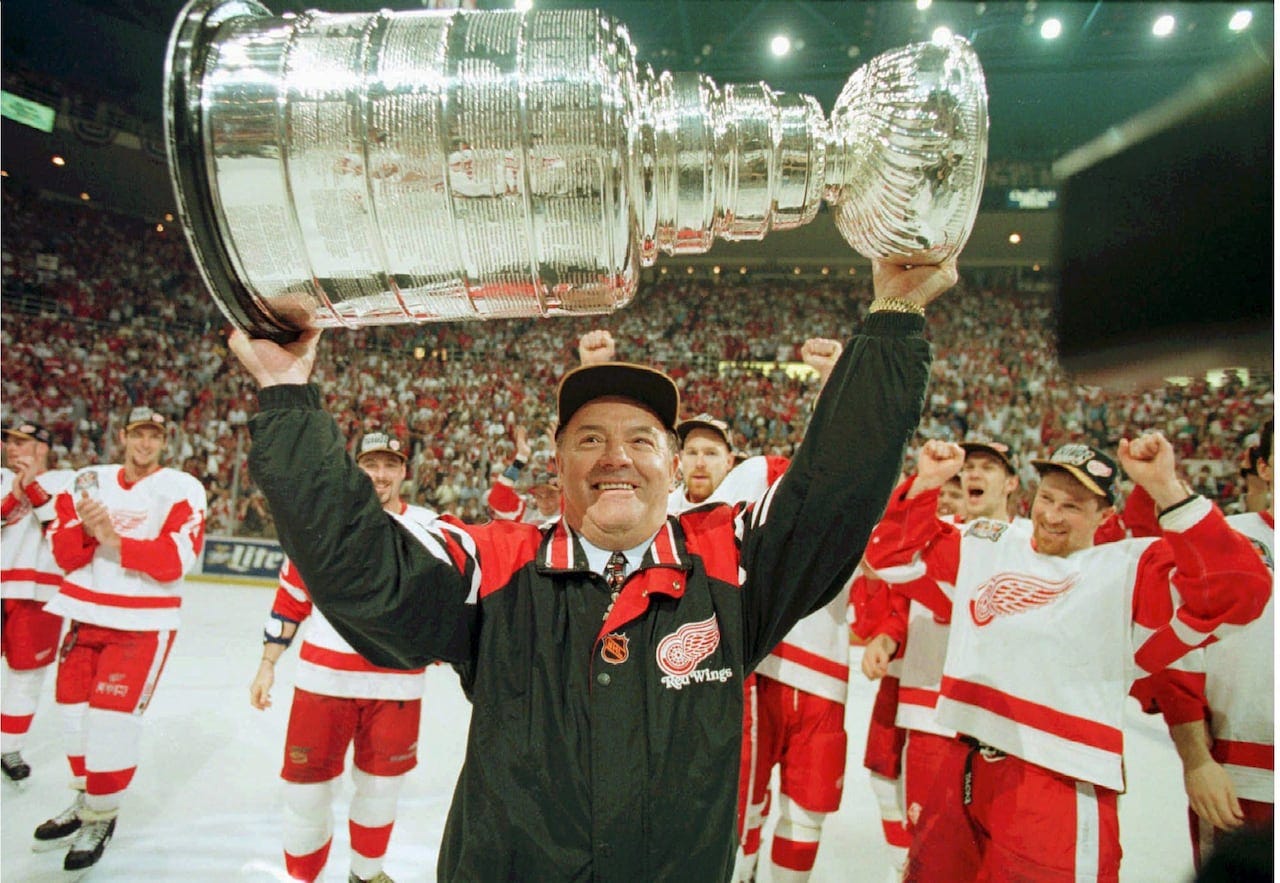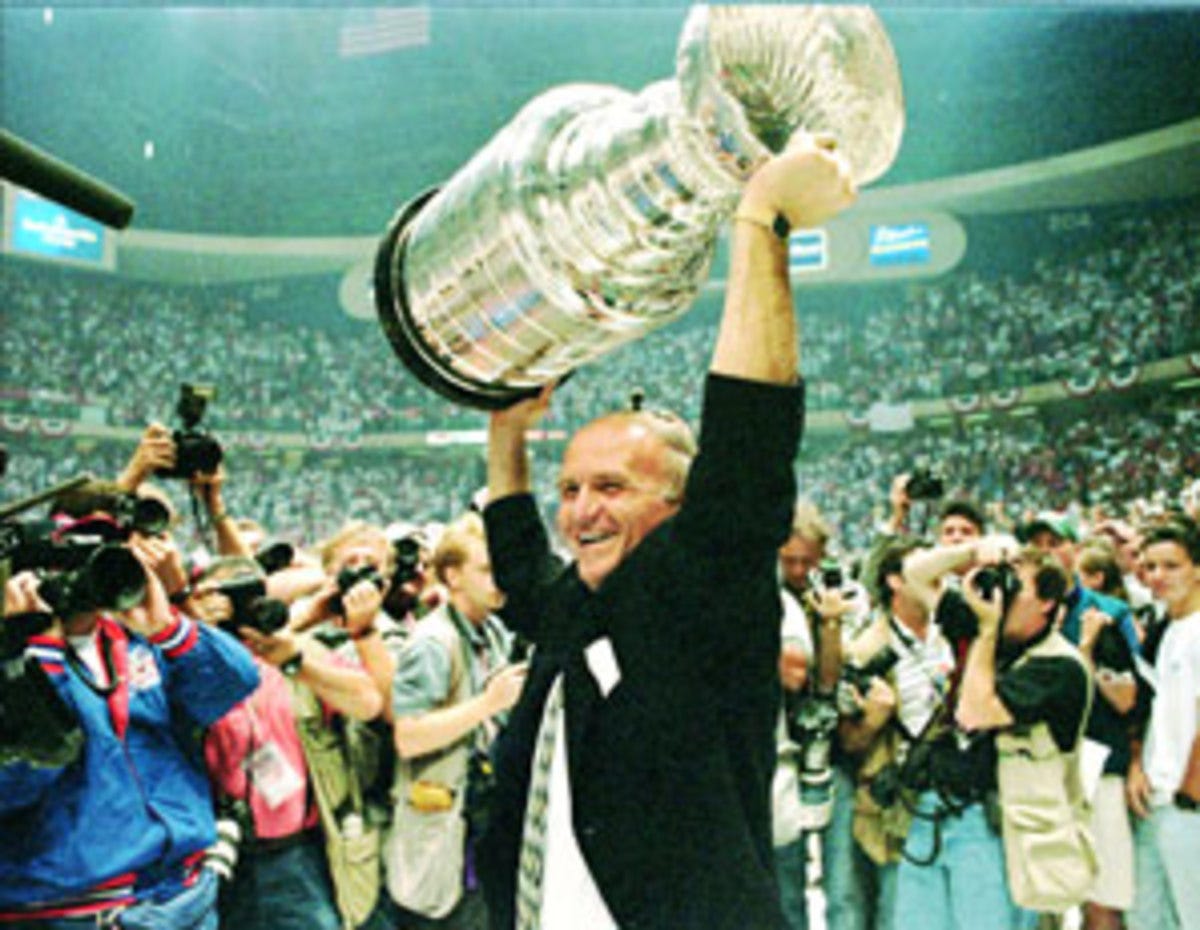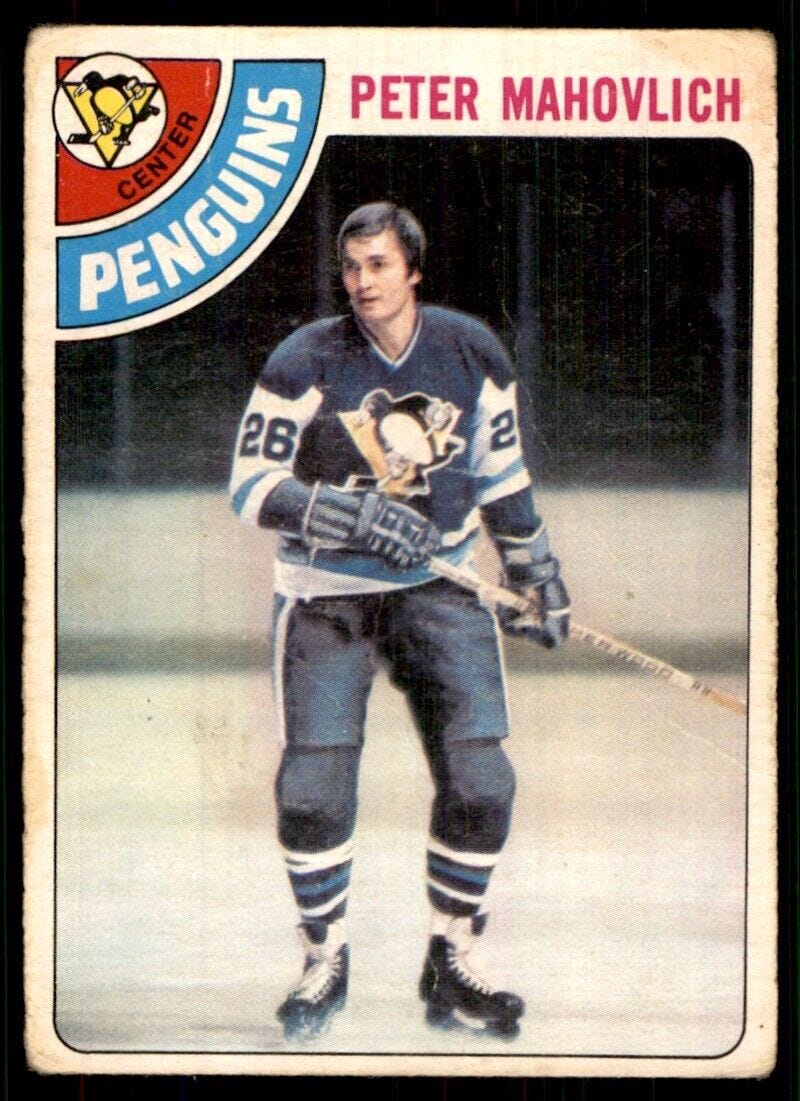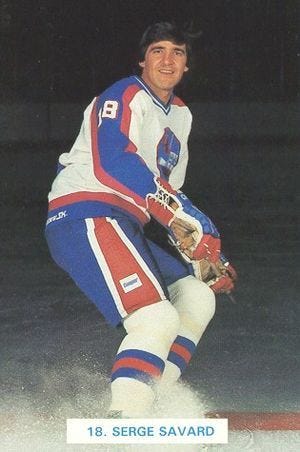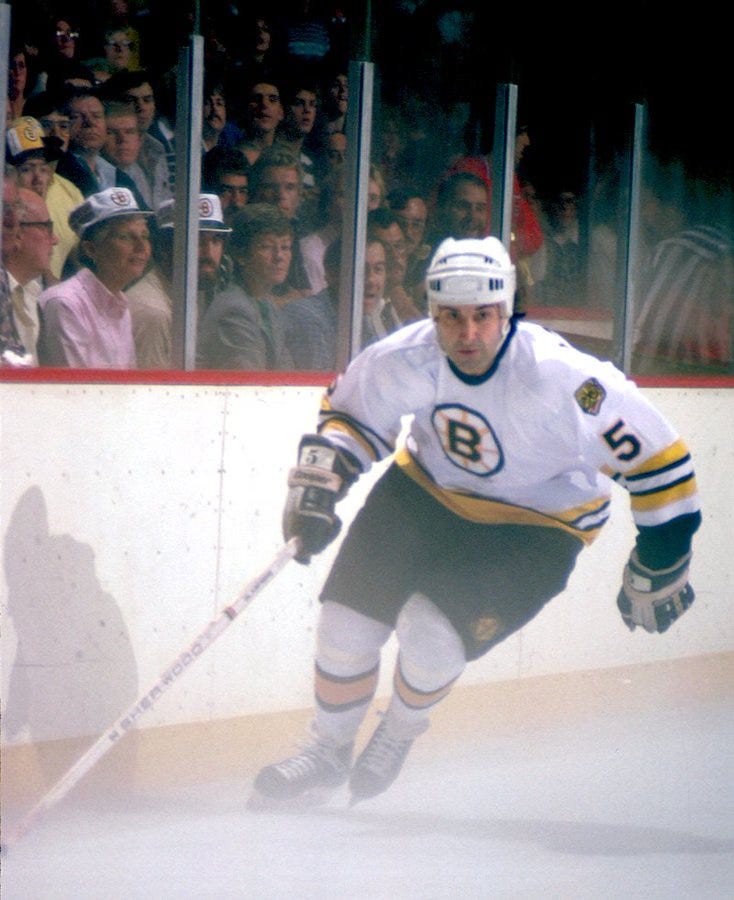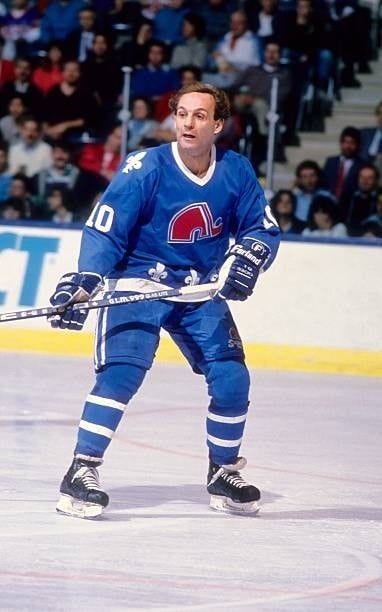May 21st 1979 in the Montreal Forum certainly didn’t feel like the end of a dynasty, but it was. On that day the Montreal Canadiens defeated the New York Rangers four to one in game five of the 1979 Stanley Cup Final to capture the club’s 22nd championship and their fourth in a row. However, since that night 45 years ago, Montreal has only return to the Stanley Cup finals four more times, winning twice.
Change in Montreal’s case came quickly. When the defending Stanley Cup Champions opened training camp in fall of 1979, instead of one of the most dominant teams in the NHL they had an inexperienced GM, a coach who would only last 30 games, and had lost their captain, starting goalie and first line centre. Now the team was still exceptionally talented and Pierre Larouche would step up as a fifty goal centre, while Dennis Heron and Michael Larocque served as a functional goal-tending duo. But the decline had already set in. That year they lost to a not particularly talented Minnesota North Stars team in the second round of the playoffs. For the next three years after that the Canadiens would not win a single playoff round, even losing to provincial rivals Les Nordiques in 1982.
Dynasty’s decline and replacement by another dominant team is inevitable. The New York Islanders, with stars Brian Trottier, Mike Bossy and Denis Potvin were a rising power and the Edmonton Oilers, joining from the defunct WHA, had a kid named Wayne Gretzky on their team, plus had just drafted another WHA alumni in Mark Messier. Those two teams would go on to win 9 of the next 11 Stanley Cup finals. But what about the players on the team whose dominance was a thing of the past? What happens to them? That is the subject of this article as we look at the careers of the members of the 1970s Montreal Canadiens after their final triumph in May of ‘79. As we shall see, it resulted in a few double takes as these stars of the 1970s changed teams in the 80s.
Coaches are key to any team’s on-ice success and arguably the largest factor in Montreal’s decline was coach Scotty Bowman’s decision in the summer of 1979 to join the Buffalo Sabres as their coach and general manager. When Montreal’s GM Sam Pollock retired at the end of the 1977-78 season, both Bowman and Director of Player Personnel Al MacNeil had wanted the job. Instead, the Bronfman brothers who owned the team appointed Irving Grundman, the manager of the Montreal Forum’s business operations and hockey neophyte as GM. Upset at being passed over, Bowman and MacNeil lasted one more season with Montreal before leaving for Buffalo and the Atlanta Flames respectively. It is fair to say that Bowman ended up doing alright for himself.
For the Canadiens in 1979, some players wanted to go out on top. Captain Yvon “the roadrunner” Cournoyer ended his career in the summer of 1979 after sixteen seasons in the NHL, all with Montreal. Back pain had limited him to fifteen games in his final year and he had sat out the entire playoffs, so his departure was not a surprise. Similarly unsurprising was starting goalie Ken Dryden’s announcement that he too would be retiring. The iconic goalie had considered it during the summer of 1978 and was persuaded to return for one final year by Montreal management. More shocking was first line centre Jacque Lemaire’s announcement that he too would be retiring from the NHL at only 32 years of age. Rather than accept Montreal’s contract offer of $1.25 million over five years, he accepted a three year contract offer from the Swiss League team HC Sierre to serve as a player/coach and general manager. Lemaire would return to Montreal in 1983 but as a coach, his days playing in the NHL were over. His career also turned out okay, even if he did make hockey unwatchable for a decade.
Hence when the Canadiens took the ice for the first game of the 1979-80 season, it was a different team both on and off the ice than the one that had won the cup in May. Yet, many of the key members of those cup winning teams remained in Montreal. Two players would play out the rest of their career there. Rejean Houle, who had been with the team since 1969, minus a three year stint with the Quebec Nordiques of the WHA, stayed with the Canadiens until the end of the 1982-83 season. Much like Cournoyer, injuries limited him to 16 games in his final year and he retired to go work as an executive with Molson Brewery. He later served as GM of the Canadiens. his tenure which we shall not talk about here.
Bob Gainey was one of the younger member of the dynasty and continued playing with Montreal throughout the 1980s. He served as captain when they won the cup in 1986 and when Montreal reached the finals in 1989. After losing to Lanny McDonald’s moustache and his Calgary Flames in 1989, Gainey retired. If you are going to guess that he also returned as GM of the Montreal Canadiens, you would be correct, serving in the role from 2003 until 2010. It is safe to say he did a better job than his teammate Houle in the role.
Arguably one of the key pieces of the Habs’ dynasty had already left the team before 1979. The younger brother of star player Frank “The Big M” Mahovlich, Peter Mahovlich joined the Canadiens in 1969 after a trade with Detroit. He spent the next season bouncing between the Habs and their AHL affiliate. However, in 1970-71 he broke out for 35 goals and 61 points and secured his role as second line centre behind Lemaire. A member of the 72 Summit Series and 76 Canada Cup team, in 1974-75 he put up 82 assists in a single season, which is still the Canadiens single season assists record. However, on 29 November 1977 Montreal dealt Mahovlich to the Penguins for Pierre Larouche and a player to be named later and future considerations (AKA two bags on pucks).
The trade was a classic example of trading an aging but known star to a market desperate to attract fans, for potential. Larouche was a decade younger than Mahovlich and had been the Pittsburgh Penguins’ 8th overall pick in the 1974 draft. Montreal had picked at number five and seven, taking Cam Connor and Doug Risebrough ahead of Larouche, and now sought to fix the oversight. Two years later in1976, Larouche had become the youngest player in history to score fifty goals and 100 points in a season. His point totals had dropped off the next season and Pittsburgh was in need of consistent offensive production plus a big name star to sell tickets and unlike in the early 2000s when facing a similar problems, the owner of the team couldn’t unretire.
The trade worked out reasonably well for both teams. After dealing with injuries during his first full season in Montreal, Larouche would go on to score 50 goals in the 1979-80 season. He was later traded to Hartford and then the New York Rangers where he would also put up 48 goals for the Rangers in 83-84. Mahovlich played two seasons with the Penguins and while he would never again reach the 100 plus point plateau, he did entertain the crowd at “The Igloo” in Pittsburgh. Mahovlich finished his NHL career with the team he started with, the Detroit Red Wings. Ironically, playing alongside former Habs goalie Roggie Vachon (who appears in this story later). After a year in the AHL, Mahovlich ended his playing career except for a brief stint in the IHL as a player-coach for the Toledo Goaldiggers, of which the less said the better.
Montreal still won one more cup without Mahovlich, and Larouche was probably an upgrade at the centre position for the team given his age and goal scoring ability. After back to back playoff failures in 1980 and 81, the remaining players from the 1970s dynasty started to leave one by one. The first was Serge Savard. An exceptional skater and offensive defenceman early in his career, two broken legs over the course of ten months between 1970 and 71 led him to reinvent his game as a defensive stalwart. Frequently paired with Larry Robinson (more on his later), Savard would retrieve the puck, avoid the forecheck, often with the spin-o-rama, and dish it off to Robinson, who could join the rush. After 14 seasons, seven Stanley Cups, a 72 Summit Series triumph and disappointing playoff results in 80 and 81, Savard was ready to retire. The fact that the Montreal Forum crowd would also boo Savard when he made mistakes in his later years certainly contributed to his decision.
Yet a quirk in the NHL’s roster rules and Savard’s close relationship with John Ferguson led to him returning for two more years to the NHL. After he announced his retirement, the Canadiens did not ensure that Savard cleared waivers, meaning any team could make a claim for him. So on 5 October 1981 the Winnipeg Jets did. The trick was convincing Savard to play for the Jets. Enter John Ferguson. He had been the assistant GM to Harry Sindon for the 72 Summit Series and was instrumental in getting Savard and Peter Mahovlich onto Team Canada. Ferguson now called upon that old connection and convinced Savard to move to Winnipeg for two seasons. In his initial season with the Jets he only played 47 games but in his final season in the NHL Savard suited up for 76 games and scored 20 points, pushing him above the 1000 games played plateau. Savard later said that he was considering a third season with the Jets who had a genuine superstar in 19 year old Dale Hawerchuk plus a decent supporting cast of players including Thomas Steen, Paul McLean and Dave Babych. However, Montreal came calling, offering Savard the position of General Manager. Savard chose to return to Montreal, this time in the front office, setting the template for the Canadiens of recruiting former members of the 1970s dynasty to serve as GM. The difference was that Savard won two cups during his time as Habs’ GM and made a number of excellent draft choices, including a goalie from Quebec named Patrick Roy.
Fellow defender Guy Lapointe lasted one season longer in Montreal. Known for his powerful slapshot and wicked sense of humour, Lapointe still holds the Montreal record for most goals in a season by a defenceman with 28. Along with Peter Mahovlich, he was also the practical joker on the team as everyone from teammate Mario Tremblay to Prime Minister Pierre Trudeau found out. Yet by the 1981-82 season Lapointe’s ice time was declining and he was very aware of how the Forum faithful had treated Serge Savard the year before, all of which led him to request a trade. In March of 1982 Montreal traded him to the St. Louis Blues for a second round draft pick. Upon his trade Lapointe told the Montreal media, “It is better to leave now than wait until I’m in my decline and people start to boo me.”
Lapointe finished the 1981-82 season in St. Louis. The next year a broken cheekbone limited Lapointe to 54 games, although he still put up a respectable 23 points. Now a free agent Lapointe signed with Montreal’s great rival the Boston Bruins for the 83-84 season. Boston was trying to replace retired legend Brad Park and bringing in a veteran French-Canadian defender to play with their emerging superstar Ray Bourque must have played into Boston GM Harry Sindon’s thinking. However, Lapointe suffered a series of injuries and was limited to 45 games where he only scored two goals. Upon the conclusion of the season, Lapointe announced his retirement.
The 1984-85 season saw two of the most iconic Montreal forwards leave the team, Steve Shutt and Guy Lafleur. Shutt left on more amicable terms than Lafleur. The first left-winger in NHL history to score 60 goals in a season, the 1983-84 season saw Shutt’s offensive totals drop to only 14 goals in 63 games. With a new, defensively minded coach in former Canadiens Dynasty member Jacques Lemaire, Shutt was increasingly marginalized and struggling for playing time. After only dressing for ten games at the start of the 1984-85 season, he requested a trade from Canadiens GM (and other dynasty member) Serge Savard who agreed to trade his former teammate to the LA Kings in exchange for a 10th round pick. Shutt played 59 games for the Kings, scoring 16 goals that year. However, at the end of the season, the King’s GM and another former Montreal Canadien, Roggie Vachon, wanted to move the team in a younger direction, leading him to waive Shutt. Based on the terms in his contract, the former sixty goal man’s rights returned to the Canadiens where, rather than fight for a spot on the roster, he retired.
Guy Lafleur’s departure was much less amicable. Also upset with Lemaire’s defensive first mind-set, Lafleur demanded a trade from former teammate Serge Savard. However, given the optics of dealing one of the biggest stars in franchise history, the Canadiens’ GM refused, forcing a bitter Lafleur into retirement. Three years later Lafleur was inducted into the Hockey Hall of Fame in his first year of eligibility. But then in July of 1988 Lafleur and his agent decided see if any teams would be interested in signing the Hall of Famer to a one year contract to return to the NHL. They reached out to the New York Rangers, Pittsburgh Penguins, Detroit Red Wings and LA Kings and it was the Rangers, coached by Lafleur’s friend Michel Bergeron and managed by former Bruin’s star Phil Esposito, that responded. Two days later the four met in person and Lafleur signed a one year deal to play in New York.
While not the offensive dynamo that he had been previously, Lafleur still recorded 45 points in the 67 games he was limited to due to a knee injury. He also managed to scored two goals against Patrick Roy in his return to the Montreal Forum, where he received a massive standing ovation from a grateful Montreal crowd. However, his friend and coach Beregeron was fired at the end of the season and went back to the Quebec Nordiques, the team that he had started his coaching career with and whom had traded him to the Rangers in the only known trade for a coach. Lafleur, once again a free agent, followed Bergeron to the Nordiques. Lafleur played two more seasons with the Nordiques, helping to mentor rising star Joe Sakic. However, in each of those seasons the team finished last in the league.
Lafleur announced his retirement at the end of the 1990-91 season. However, that did not stop the Minnesota North Stars from selecting him with their last pick in the 1991 Expansion Draft. Why the North Stars, a team which had been in the league since 1967 were picking in the 1991 Expansion Draft along with the San Jose Sharks is another crazy story that we don’t have time to get into here. Regardless, the North Stars now held Lafleur’s rights, but he had already agreed to take a front office job with the Nordiques. Yet NHL rules stipulated that no player could work for one team if their rights were held by another team in the league. So Quebec had to trade for Lafleur, giving Minnesota the rights to former NHL player Alan Haworth, who was busy finishing his pro career in Switzerland. With the trade, Lafleur officially ended his career as an NHL player for the second (and last) time.
The only remaining Dynasty member to keep playing after Lafleur was the final and youngest member of the Canadiens defensive “Big Three”, Larry “Big Bird” Robinson. Drafted by the Canadiens in 1970, the same year that they took Guy Lafleur, Robinson was a dominating presence on the ice. At six foot four he could hit, shoot, skate and fight (just ask Dave Shultz of the Flyers). Teamed with Savard, the two were arguably the top defensive pairing of the 1970s. Despite the Canadiens declining fortunes, Robinson remained with the team and still played at a high standard. He was also instrumental in helping the Canadiens win the Stanley Cup in 1986 along with captain Bob Gainey.
After losing in the 1989 Stanley Cup final to the Calgary Flames, Robinson was a free agent and eligible to sign with any team in the league. Although his best years were behind him, he still could play regular minutes and contribute offensively. As a result, LA Kings owner Bruce McNall offered Robinson a three year contract worth $400 000 a year to come play on the West Coast with Wayne Gretzky. Although Robinson later said that he regretted not finishing his career with the Canadiens, one can’t blame him for taking a final payday in the sun and going to play with a living legend. In his first season with LA Robinson recorded 39 points in 64 games. However, his points totals and ice time dropped off and in his final year he only played 56 games recording 13 points. Robinson, like many of his peers went into coaching, joining the New Jersey Devils as an assistant coach in 1993 and winning the cup with them in 1995. He also won the cup with the Devils in 2000 and 2003 and again as a hockey executive with the St. Louis Blues in 2019. Certainly the most impressive post-playing career tally of all of his 70s teammates.
The decline of the Montreal Canadien’s 1970s Dynasty was the first modern dynasty dispersal. With NHL expansion there were now more than six teams in the league and so an increased number of roster spots for players whose abilities were in decline. Furthermore, many fledgling markets were happy to cash in on the drawing power of a big name, even if they were no longer able to perform like they used to. Finally, players like Lafleur and Savard could act as mentors to younger players on new teams struggling to establish themselves in the league. The dynamics that caused Montreal’s diaspora continues to this day, and a similar story can be told about the New York Islanders and Edmonton Oilers with Brian Trottier playing for the Pittsburgh Penguins, Wayne Gretzky and Mark Messier with the Rangers, Glenn Anderson on the Maple Leafs, and Paul Coffey playing for half the teams in the league.
With the modern salary cap league such dynasty dispersals will only be more common. While Sidney Crosby and Evgeny Malkin have remained with the Pittsburgh Penguins, the Chicago Blackhawks team of the early 2010s has spread far and wide. Patrick Kane joined the New York Rangers and then the Detroit Red Wings, while Duncan Keith ended up in Edmonton for his final season. Anze Kopitar and Drew Doughty of the LA Kings may end their careers in Southern California, but goalie Jonathan Quick is currently the backup for the New York Rangers, while Jeff Carter retired as a Pittsburgh Penguin, Jake Muzzin as a Maple Leaf, and Alec Martinez continues to play (for now) in Las Vegas. With Tampa Bay loosing in the first round for a second straight year (much as Montreal did in 1981 and 1982), where players like Steve Stamkos, Victor Hedman and Nikita Kucherov end up playing with be fascinating to watch.
